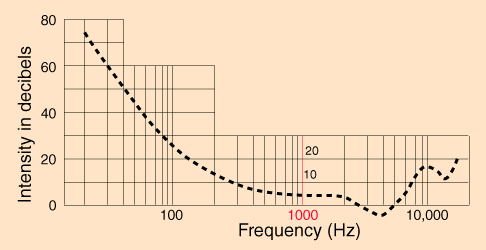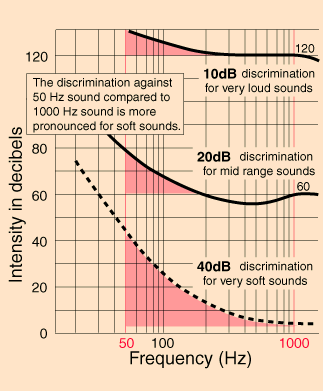 |
 |
|||||
|
|
|
|||||
|
|
||||||
|
||||||
|
Q In the latest Q&A you stated that multi-format players will
output video in the native format of the DVD (i.e., PAL DVD = PAL signal). I own
a JVC XV-SA600BK unit and can confirm that regardless of the DVD format, the
output is NTSC (i.e., PAL DVD = NTSC signal). This is stated on page 4 of the
manual, and I have also tested this on my home TV. I cannot comment on the
other DVD players you listed. T Q Since I've been looking to upgrade my current television, I read with great interest, your Guide to Buying Televisions. After reading it and thinking about it though, I was somewhat dismayed at some of the advice you gave readers. I've been looking at buying a HDTV display. My budget is somewhat restricted, but since I only needed a mid-sized display, and since my setup is in a relatively small room, I could afford some of the lower end HDTV displays. I narrowed it down to either a 30" 16:9 or 32" 4:3 unit. In the article you state that a buyer should bypass any of the 4:3 units and go directly to a 16:9 display. I analyzed my viewing habits and came to the following conclusion: I spend a large part of my viewing watching 4:3 material from broadcast/cable, and a relatively small portion watching movies from DVD/LD which are 99% 16:9. After crunching the numbers I figured that on a 30" 16:9 widescreen display I would actually only be getting about 29" due to the aspect ratio differences between the 16:9 display and the format of many movies (2.35:1). When viewing 4:3 material I would be watching everything in a 24" window. Since I don't like any of the solutions like stretching etc, I would lose the rest of the screen. Using a 32" 4:3 HDTV display which falls in the same price range (but which I can usually get more features) I would end up watching 16:9 material in about a 29" window but I would get 4:3 material delivered in a full 32" as opposed to the 30" widescreen's anemic 24". So in the end I would lose about an inch watching 16:9 material on a 32" 4:3 display but gain 8" when watching 4:3 material. So, I can only come to one conclusion, for people who watch a good portion of 4:3 material, a 4:3 display is a better choice. After all, even if I were to have a large space, say 10', shouldn't I opt to go with the biggest display I can afford? If you fill a 10' space with a 16:9 projector, your 4:3 material would still be smaller than if you were using a 4:3 display. Either solution makes me deal with black bars in some situation. Using a 16:9 display you have black bars using all 4:3 material and still have bars using widescreen stuff (albeit smaller ones). Using a 4:3 display you have to deal with bars using 16:9 material but not 4:3 material. If I were dealing with a much larger display, it might not matter to me that 4:3 images would be viewed in a smaller area, but at the sizes I have to deal with, it makes a huge difference. A This is all very true, but there is an additional problem. When showing widescreen movies on a 4:3 screen, the DVD player has to letterbox the signal, thus downconverting it. This invariably throws away some picture resolution. The exception to this is if the DVD player can be set to output in full anamorphic widescreen, and the TV adjusts its scan area so that all the information is shown, in widescreen, and in the proper aspect ratio. You will have to check with the dealer to see if the 4:3 TV you are contemplating does this. T
Q Pioneer has a new DVD-A &
SACD combo player out for well under $200. The catch, however, is that it
converts the SACD's DSD signal to PCM. Granted, I'm no audiophile, but I do dig
multi-channel music and there are a few SACD titles I have my eye on. What's the
deal with the conversion? Will there be a significant difference in quality? T
Q I currently have the
Monster Reference PowerCenter HTS 3500 MKII and now would like to buy a voltage
regulator I'm thinking of the Furman AR-1215. In what sequence should I plug
them in to my wall outlet? Should the AR-1215 plug into the wall and then the
HTS 3500 plugs into the AR-1215 or should it be the other way around? T
Q It is my understanding that the threshold of
human hearing means that for me to hear something at 25 Hz with the perception
that it is at the same volume as something at 120 Hz, the sonic information at
25 Hz would have to be played much louder.
However, this next graph shows that the discrimination changes as the loudness varies. In other words, as the loudness increases, the low frequencies will sound more like the higher ones in relative loudness. At low volume, the low frequencies will sound much lower in loudness, so you get progressive loss of perceived bass as the volume decreases. This is why some receivers have a "Loudness" control that boosts the bass when the volume is low.
Computer controlled subwoofers are just starting to appear. Hopefully, at some point, they can be programmed to change the EQ with volume differences in the signal. In the meantime, don't be concerned about this, as most bass in movies is added during post production and is digitally generated anyway. Just set the volume until it feels good. That is what home theater is about. (The graphs shown above are from the following Hyperphysics Laboratory - http://hyperphysics.phy-astr.gsu.edu/hbase/sound/earcrv.html.) T
Q Could you please give me
your insight and/or knowledge on the quality of the Sonance 5150 Cinema five-channel Amp? I have the opportunity to pick one up for about $500. Is this a
good multi-channel amp? Is this a good manufacturer with a good reputation? Any
help would be greatly appreciated. I really don't make any purchases without
your opinion. I'm also looking at an ATI 1505 five-channel amp, but the price is
about $800. The same is true for a Sunfire Signature Grand II five-channel Amp
($800). T
Q I am thinking of buying the Dynaudio Audience 82
speakers that you reviewed recently. Dynaudio speakers are known to be power
hungry. Within my budget I can go for powerful amplifier like NAD 218thx (+ NAD
C160 ) or for an integrated unit like the Primare A30.1 . What would be a better
match ? Primare is supposed to be a very high quality amplifier (as per reviews
) but lower power than NADs. Will Dynaudio Audience series speaker exploit the
full potential of this amplifier ? In the same price range I can buy an NAD
pre-power which will supply the abundant power that the Dynaudios are known to
require. Also is the jump in quality from NADs to Primare worth the loss of
power? T
Q I am confused as to what HD selection I should
set my STB and HDTV. Currently, I have both set to 1080i. Is this correct and
why would I select either 480p or 720p? I have the Sony Grand Wega KF-60XBR800
and the Samsung SIR- TS160. I receive my HD broadcasts via DirecTV.
|
||||||




